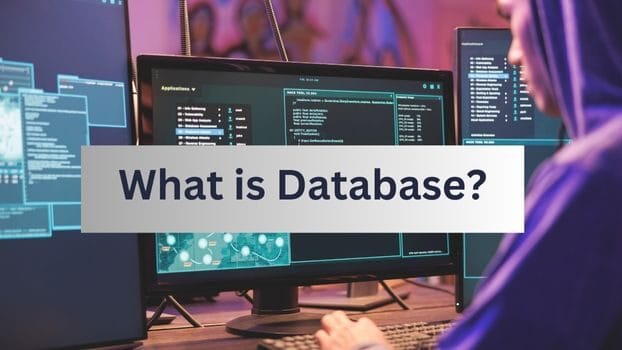Database
A database is an organized group of data so that it can be simply accessed as well as managed. You can contain data into tables, rows, and columns, and index it to make it simpler to find relevant information. Database handlers make a database in such a way that only one collection of software programs supplies accesses to data to all the users. The primary goal of the database is to use a big amount of details by storing, retrieving, as well as managing data.
There are multiple dynamic websites on the World Wide Web nowadays which are handled via databases. There are different databases available like MySQL, Sybase, Oracle, MongoDB, Informix, PostgreSQL, as well as SQL Server. SQL or Structured Query Language is used to work on the data held in a database. SQL depends on relational algebra as well as tuple relational calculus. A cylindrical structure is used to show the image of a database.
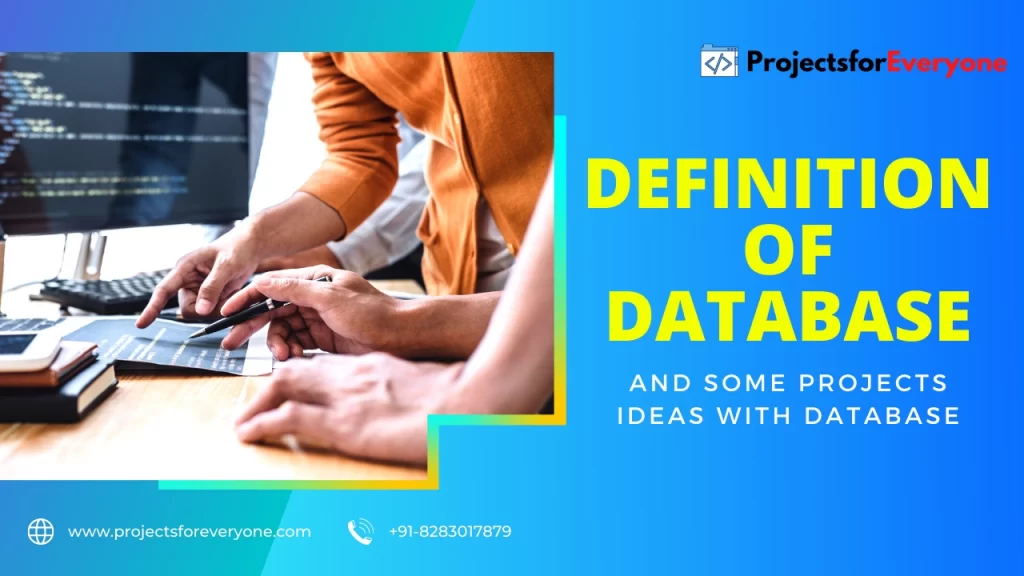
Definition of Database
A database is nature’s way of storing data. It’s useful as it helps us record information and keep track of things or thoughts in our heads, which we can reuse later on. This stops us from having to remember everything all the time by providing a place to store all of this information safely and efficiently.
Content: These are some great tips on how you can make your office work more easily for you. Using this knowledge will increase the productivity of your employees, so give them a try.
Here various projects in Programming languages using Database
Here is a list of programming languages using database and web frameworks. There are links to example implementations in that language. It’s not a complete list but it will open your horizon.
ASP.Net Projects with database
Courier Management System Project Asp.Net with C#.Net with database
The Courier Management System is a simple and powerful software solution for courier companies. It’s useful to make transportation of goods from one place to another easier, cheaper and more organized. The idea behind this software is to reduce the company’s costs and save time for couriers.
So that your service would be even more competitive. The Courier Management System will give the company a whole database of contacts and customers, which can be sorted and updated in any way the company wishes. for more click here
Blood Bank Management System in Asp.Net with C#.Net with database
Blood Bank Management System is a distributed application that relies on the Database Management System to store all the data and on a network to allow users to access the program from anywhere. Basically, this application manages the Blood Bank on a whole.
Blood Bank is probably one of the most important things for the medical field since it can help save lives. This application can help save lives by storing all the Blood Bank information in one place so it can be accessed. This is a great application for Blood Banks since it can help run Blood Banks smoothly and safely. for more click here
Online Discussion Portal Website in ASP.Net with C#.Net with database
An online discussion forum is a place where people can engage in conversations around a certain topic. These forums usually have a set of rules that help in encouraging healthy discussion. Discussions are usually categorized into different boards.
For example, the discussion boards about movies are likely to have different rules than the discussion boards about politics. Moderators and administrators monitor online discussions and enforce the forum rules. for more click here
Online Music Website Project Asp.Net with C#.Net with database
Online music website projects can be a very profitable venture with a little bit of knowledge, proper planning, hard work, creativity, and dedication. We can enjoy music while driving, at a party and while working.
Music is something that makes our life happier and better. The trend is changing and people are moving toward online music streaming websites. Apart from the movies, television shows, sports events, etc. People are turning toward online entertainment in general. for more click here
Java Projects with database
Airline management system project in java with MySql, JDBC with database
The airline management system consists of two main components: Passenger Management System and Reservation System. Passenger Management System deals with managing passengers, such as reservation data, ticket issuance, age group, fare class, travel agency management, etc. The reservation System deals with passenger information, ticket information, and travel agency information. for more click here
Library Management system project in java with database
Library Management System is a system in which the books in the library are classified and cataloged. The Library Management System tracks the books by the book id, book name, author, copy, due date, status, etc. the Library Management System stores the information of the book in the database.
This Library Management System also provides the facility to search the books by author, book name, date, status, location, and copy. The Library Management System provides a user-friendly interface for the user. for more click here
Tourism management system project in java with database
The tourism management system project is a system for managing tourism. The Tourism Management System(TMS) is a system for managing tourism. A picture illustrates the system cycle development. for more click here
PHP Projects with database
Online Clothes Shopping Project in PHP with database
A Gift Shop is an e-commerce website where you can sell all kinds of products related to a specific theme. In your case, the theme gifts. Moreover, a gift shop is usually a portal or an online portal where product cards are provided with all the relevant information including the price, shipping rates, delivery time, etc.
You can sell products by uploading and configuring each product card. Each card will have unique information and a picture corresponding to the product. In addition, you can upload a banner on the homepage of your shop to promote the products. There are many other features of a gift shop, which we will discuss with you. for more click here
Responsive Online Gift Shop Project in PHP with database
A Gift Shop is an e-commerce website where you can sell all kinds of products related to a specific theme. In your case, the theme gifts. Moreover, a gift shop is usually a portal or an online portal where product cards are provided with all the relevant information including the price, shipping rates, delivery time, etc.
You can sell products by uploading and configuring each product card. Each card will have unique information and a picture corresponding to the product. In addition, you can upload a banner on the homepage of your shop to promote the products. There are many other features of a gift shop, which we will discuss with you. for more click here
Online Camera Store Project in PHP with database
We have developed this project through our experience in E-Commerce. We have a successful online camera store, which is running for the last two years. This project is going to provide a strong business model with a website that is already generating sales. For making this project a successful one, we have already made a marketing strategy. We have designed it in such a way that the customer would be able to fulfill her requirement with ease. for more click here
Python Projects with database
Hotel Management Project in Python GUI with database
Hotel management projects are those projects which involve the planning and control of the hotel. This Hotel projects deal with the planning of the entire hotel, management of hotel services, guest accommodation, food services, finances, and revenues. for more click here
Types of Database
There are various types of databases available today and the evolution of technology and data storage has led to one more popular than the other. Sometimes making a decision on which to use for your organization can feel like it’s impossible but there is a very simple process you need to follow to help you make your mind up successfully.
Here, we will be looking at four types of databases that are available today – Oracle, SQL Server, MySQL/MariaDB, and PostgreSQL – as well as examining their properties or their usefulness in areas such as availability or scalability.
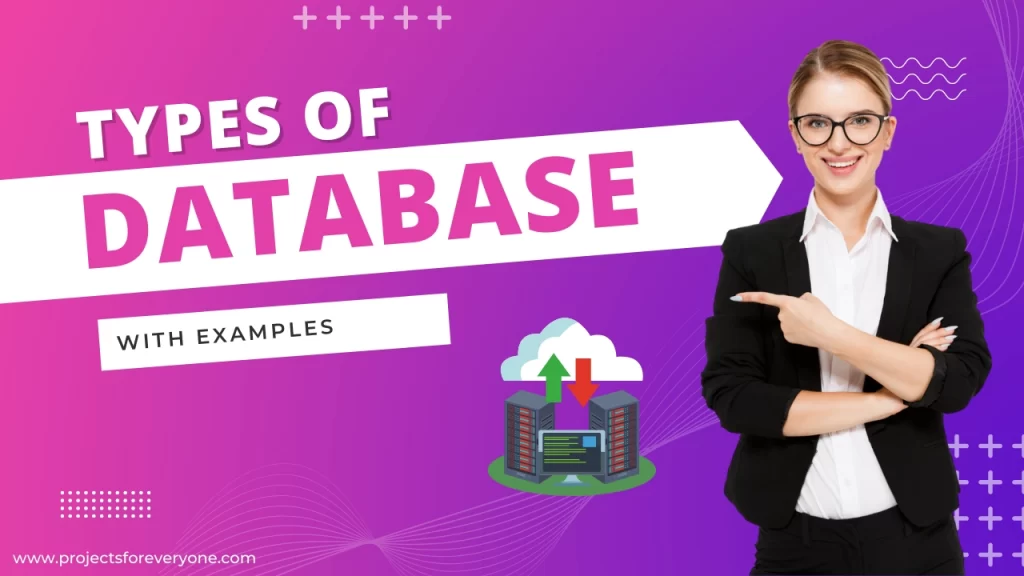
Here are some popular types of databases:-
- Distributed Database
- Relational Database
- Object-oriented Database
- Centralized Database
- Open-source Database
- Graph Database
- JSON Database
- Hierarchical Database
- Network DBMS
Distributed Database:-
A distributed database is a type of database that has contributions from the common database as well as information recorded by local systems(Computers). In this distributed database system data type, the data is not in one place as well as it is distributed at various companies.
Relational Database:-
This relational type of database defines database relationships just like a form of a table. It is also called a Relational DBMS (Database Management System), which is the most popular DBMS type in the market. Database example Microsoft SQL Server, Oracle Database, MySQL, PostgreSQL, and IBM Db2. They may not be the best choice for organizations with a lot of unstructured or semi-structured data.
Advantages of the Relational Model
- Easy: This model is easier as compared to the network as well as the hierarchical model.
- Scalable: This model can readily rise as we can add as many rows as well as columns we want.
- Structural Independence: We can make differences in database structure without altering the way to access the data.
Disadvantages of the Relational Model
- Hardware Overheads: For hiding the complexities as well as making things simpler for the user this model needs more powerful hardware computers and data storage machines.
- Bad Design: The relational model is very simple to design as well as use. This comfort of design can guide the development of a flawed database which would delay down if the database increases.
Object-Oriented Database:-
Object-oriented database of computer database supports the hold of all data types. The data is kept in the form of things. The things to be held in the database have features as well as methods that define what to do with the data PostgreSQL. For example Wakanda, Object-Store.
This model represents a database as a group of objects, or reusable software components, with associated features as well as methods. There are two kinds of object-oriented databases:
A multimedia database includes media, such as pictures, that could not be reserved in a relational database.
A hypertext database permits any object to link to any other object. It’s useful for managing lots of disparate data, but it’s not perfect for numerical analysis.
Centralized Database:-
It is a centralized place, as well from various backgrounds can access this data. This type of computer database store applications procedures that help users access the database actually from a remote place.
In the centralized database, the computer that stores the data called the “database server”, is also responsible for processing the data. This makes it easier to manage, but there’s also a downside. Both the data storage and data processing tasks are in the hands of a single entity.
Open-source Database:-
The open-source database held details that connect to operations. The Apache Derby open source project is a source-available, open, and freely distributable, embeddable, relational database management system (DBMS) for Java.
Graph Database:-
A Graph Database is a specialized database that manages data that can be naturally expressed as a graph (for example, social networks, business networks, and logistics networks) and is designed to take advantage of graph structure to enable new kinds of queries, analysis, as well as applications.
A graph-oriented database utilizes graph theory to store, map, as well as query connections. For example, an organization can use a graph database to mine data about consumers from social media, Data-stax Enterprise Graph, and Neo4J.
JSON Database:-
JSON-oriented database, the data is kept in the document set, usually using the XML, JSON, as well as BESON formats. In this database, records can manage as much as you want, in any different database type you select.
Hierarchical Database:-
This kind of DBMS uses the “parent-child” relationship of keeping data. Its structure is like a tree with nodes defining records as well as components defining fields. The windows registry used in Windows XP is a hierarchical database instance.
A hierarchical database is a type of data repository in which the data is stored according to a tree pattern. The data is stored in a non-hierarchical manner in most relational databases. A relational database is based on relations (tables) and the rows and columns within these relations. For example IBM Information Management System (IMS), and Windows Registry.
Advantages of Hierarchical Model
- It is very easy as well as fast to traverse via a tree-like structure.
- Any change in the parent node is automatically skipped in the minor node so, the integrity of data is kept.
Disadvantages of Hierarchical Model
- The difficult relationship is not sponsored.
- As it does not support more than one parent of the minor node so if we have some complex connection where a minor node needs to have two parent nodes then that can’t be defined using this model.
Network DBMS:-
This kind of DBMS helps many-to-many relations. It usually results in complicated database structures. RDM Server is a model database management system that executes the network model. This model is an attachment to the hierarchical model.
It was the most famous model before the relational model. This model is the same as the hierarchical model, the only distinction is that a record can have better than one parent. It returns the hierarchical tree with a chart.
Advantages of Network Model
- The data can be accessed quickly as compared to the hierarchical model. This is because the data is more connected in the network model and there can be more than one path to reach a particular node.
- As there is a parent-child relationship so data probity is present.
Disadvantages of Network Model
- As more and more connections need to be taken the system power gets complex. So, a user must be having a thorough understanding of the model to perform with the model.
- Any change like updating, deletion, or insertion is very difficult.
What are the Different Types of Database Component
- Hardware
- Software
- Data
- Procedure
- Database Access Language
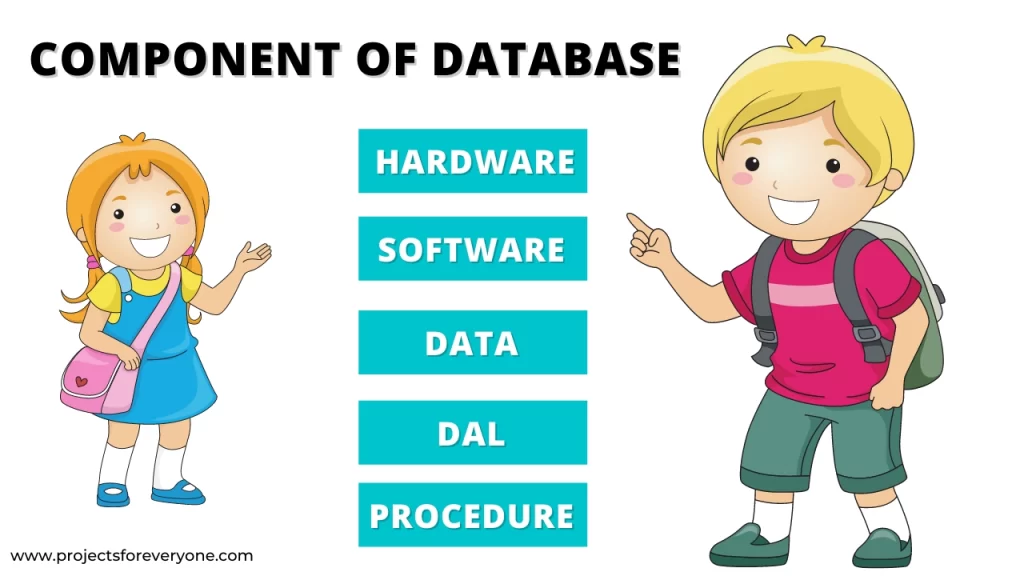
Hardware:-
The hardware consists of physical, electronic gadgets like computers, I/O devices, storage devices, etc. This shows the interface between pc as well as real-world systems.
Software:-
This contains the database software itself, the Operating System, the web software used to transfer the data among users, and the application programs for accessing data in the database.
Data:-
Data is a raw as well as an unorganized fact that is required to be processed to make it significant. Typically, data includes facts, observances, perceptions, digits, symbols, characters, pictures, etc.
Procedure:-
Procedures are a collection of instructions as well as rules that allow you to use the DBMS (Database Management System). It is designing as well as handling the database using established techniques, which allows you to show the users who operate as well as manage it.
Database Access Language (DAL):-
Database Access language is used to access the data and from the database, join new data, update already existing data, or retrieve required data from DBMS. The user reports some clear controls in a database access language as well as submits these to the database.
What is a DBMS?
Database Management System (DBMS) is a group of programs that allow its users to access databases, exploit data, report, as well as convey data. It also helps to manage access to the database. DBMS (Database Management Systems) are not a new concept as well as, as such, had been first executed in the 1960s.
With the term database, technologies developed a lot, while usage, as well as desired functionalities of databases, grew significantly. A DBMS is a computer program that enables the management and organization of vast amounts of data. A DBMS is usually the heart and soul of an enterprise’s information system.
For example:-
A credit card company might use a DBMS to keep track of all the transactions made in its name by customers. Or, a newspaper might use a DBMS to manage its subscription list, article archives, accounts receivable, and other critical information.
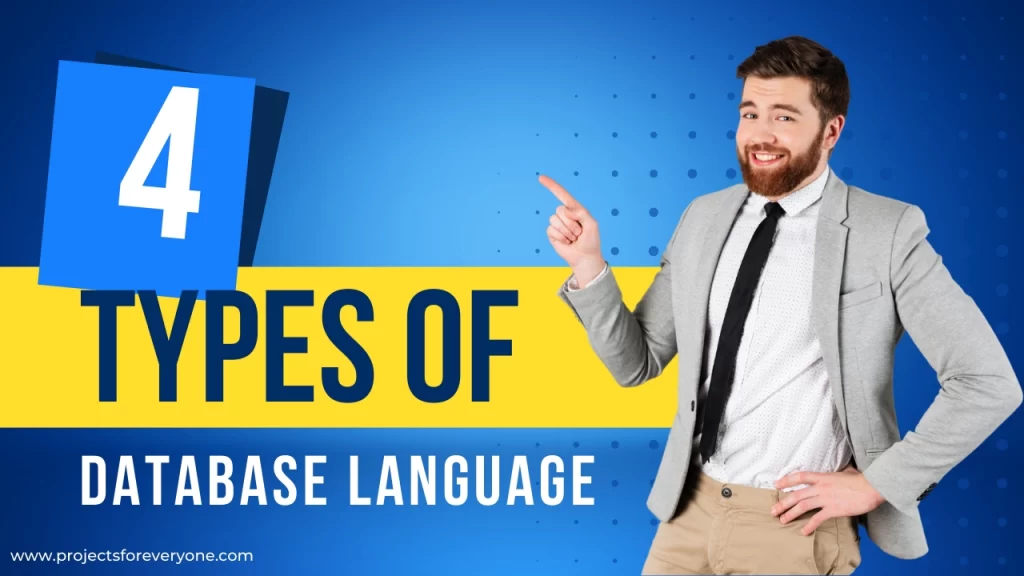
Database Languages
A DBMS provides the right language to users to assist query databases as well as updates. It builds as well as maintains the database. Here some examples of database languages are SQL, Oracle, MS Access, etc. Database languages are generally divided into Data Manipulation Language (DML), Data Definition Language (DDL), Data Control Language (DCL), as well as Transaction Control Language (TCL).
This Data Definition Language (DDL): It helps define data and their connection to the other data types as well as designs databases, tables, files, and data dictionaries within databases.
Data Control Language (DCL): DCL prevents access to data and the database
Data Manipulation Language (DML): It supports plain data manipulation functions like allowing users to insert, recover, update, as well as delete data from the database.
Transaction Control Language (TCL): TCL manages change in the database created by the DML statement.
Benefits of DBMS
- DBMS presents a combination of methods to store as well as retrieve data.
- DBMS serves as an efficient handler to balance the wants of multiple applications using the exact data.
- Uniform management systems for data.
- A DBMS uses different effective procedures to store as well as recover data efficiently.
- It offers Data Integrity as well as Security.
- The DBMS means integrity regulations to get a high level of security against prohibited access to data.
- A DBMS programs simultaneous access to the data in such a technique that only one user can access the exact data at a time.
- Reduced Application Development Time.
Disadvantage of DBMS
DBMS may offer several benefits but, it has specific flaws:-
- The price of Hardware, as well as Software of a DBMS, is a little bit high which improves the budget of your company.
- The use of the same program at a time by multiple users sometimes guides to the loss of some data.
- DBMS can’t execute sophisticated accounting.
What are DBMS and RDBMS?
A relational database management system (RDBMS) guides a set of programs as well as capabilities that are created to allow the user to make, update, as well as assist a relational database, which is represented by its structuring of data into logically independent tables.
Various elements denote a Relational DBMS from a DBMS, including:
- User capacity: A RDBMS is qualified of operating with numerous users. Whereas DBMS can only manage one user at a time.
- Software/hardware conditions: A RDBMS has more significant software as well as hardware conditions.
- Programs managed: DBMS supports databases within the computer network as well as system hard disks. An RDBMS contains the connections between its incorporated tables of data.
- Data capacity: A DBMS is capable of managing small amounts of data and an RDBMS can manage an indefinite quantity of data.
- Distributed databases: A DBMS does not supply support for allocated databases while an RDBMS does.
- ACID performance: A RDBMS establishes the structure of its data on the ACID (Atomicity, Consistency, Isolation, and Durability) standard.
Qualities of Distributed Database Management System
Distributed databases are classified as either homogeneous, in which all the physical areas use the same hardware as well as run the same operating systems and applications, or heterogeneous, in which each area may have different data, software, as well as hardware structures.
A distributed database management system (DDBMS) guides a centralized application that functions to build and manipulate circulated databases, synchronize the database at periodic intervals as well as provide translucent access mechanisms to the user, ensure universal application of data change, maintain data security as well as the integrity of the database.
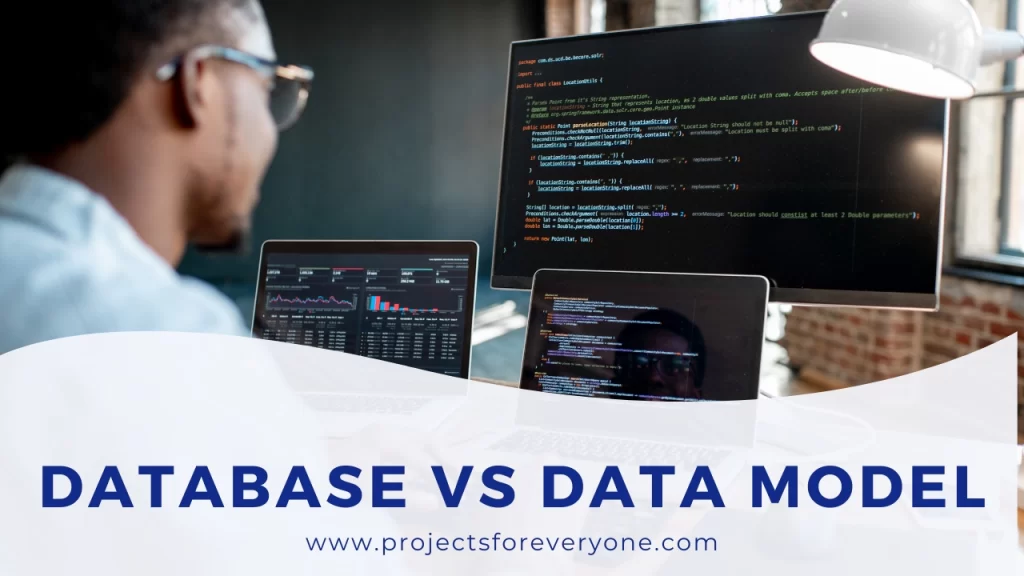
Distinction Between Data Models in DBMS
A data model is an ideational model that contains elements of data, records the way data is stored as well as recovered, standardizes how different data components connect and to the effects of real-world entities, and creates the responses must for details system needs. There are three major types of Database Management systems (DBMS) data models: relational database, network database, as well as a hierarchical database.
- Relational data model: Data is methodical as logically autonomous tables.
- Hierarchical data model: In the Hierarchical data model, data is organized into a tree-like format.
Other data models contain entity-relationship, record base, object-oriented, object relation, semi-structured, associative, context, as well as flat data models. Database system architecture in DBMS is classified as either single level, in which the DBMS is the only commodity where the user straight sits on the DBMS and uses it, or multi-tier, in which almost all elements are independent and can adjust independently.
Characteristics of DBMS
- It uses digital storage established on a server to store as well as manage the details.
- It can provide a clear as well as a logical view of the process that operates data.
- DBMS contains automatic backup as well as recovery operations.
- DBMS contains ACID effects that maintain data in a beneficial state in case of defeat.
- It can ease the complicated relationship between data.
- It can view the database from various viewpoints according to the conditions of the user.
What are the Challenges of Database?
Setting up, operating as well as maintaining a database has some typical challenges, such as the following:
- Data security:- It requires because data is a useful business asset. Protecting data stores needs skilled cybersecurity staff, which can be expensive.
- Data integrity confirms data is trustworthy. It is not always simple to achieve data integrity because it means limiting access to databases to only those capable to take it.
- Database performance needs regular database updates as well as keeping. Without the right support, database functionality can decline as the technology keeping the database changes or as the data it includes changes.
- Database integration can also be hard. It can involve integrating data sources from differing types of databases as well as structures into a single database or data lakes and data storage.
Conclusion
There are many different ways of organizing data in databases, and each has its advantages and drawbacks depending on how you’re able to access your data from both a present and future perspective. In regards to making an educated decision about what types of databases will work best for your project, it’s necessary to think about why you’re collecting that particular type of information in the first place and what kind of relationships you imagine it will have with other relevant pieces of data as well.
When choosing to work with MongoDB, you have an agile database solution that can seduce multiple use cases. MongoDB shines for both structured and unstructured data, scales as your data scales have the flexibility for schema changes and easily integrate into your existing applications all while ensuring high performance throughout.
For more details visit our site www.projectsforeveryone.com site.
Also, you can contact us on this number:- +918283017879
You can check Database projects Click Here
For see the video of Database projects Click Here
In case of any doubt, Just try Once and we will not let you down
